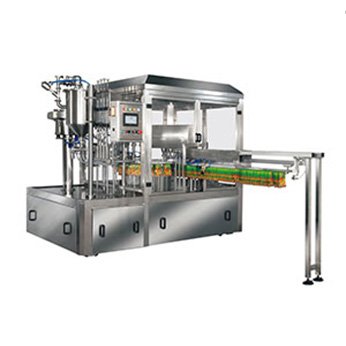Summer is here again! Do you know how high temperatures can affect continuously operating packaging machines? Summer’s high temperatures pose a serious challenge to the stable operation and lifespan of packaging machines (e.g., motor overheating, hydraulic oil deterioration, component expansion and seizure). If you don’t pay attention to these issues, they can significantly shorten the machine’s lifespan!
⚙️ Decreased Equipment Performance and Accuracy
Motor and Control System Overheating
If high temperatures cause motor winding temperatures to exceed the safety threshold (>130°C), this can cause insulation aging, burnout, or PLC malfunctions.
Precision sensors (such as photoelectric switches) experience thermal drift at temperatures above 35°C, reducing detection accuracy by more than ±0.1mm, resulting in package positioning errors or missed detections.
Hydraulic system failure
Hydraulic oil viscosity deteriorates due to high temperatures (>60°C), causing seals to harden and crack, leading to unstable pressure or leakage, impacting sealing quality.
📦 Changes in packaging material and finished product quality
Film heat seal failure
Fluctuations in heat seal blade temperature (±10°C) in high-temperature environments can lead to uneven seal strength, making plastic packaging bags susceptible to cracking or leakage (for example, a 30% decrease in weld strength on milk tea bags).
Material deformation and embrittlement
Plastic film (such as PP/PE) softens and deforms in workshops above 35°C, affecting automatic film loading accuracy. Cartons lose compressive strength by 40% after absorbing moisture, increasing the risk of stacking collapse.
Low-temperature packaging materials (such as aluminum-plastic composite film) retain their seals well in high temperature and humidity (40°C/90% RH), but low-temperature materials (such as ordinary plastic sealing bags) are prone to embrittlement and failure.
⚡3. Energy Consumption and Loss of Productivity
Increased burden on cooling systems
Heating equipment such as UV curing systems requires additional cooling (e.g., maintaining a temperature between 0 and 35°C for Teyu chillers), increasing energy consumption by 50%.
Forced speed reduction or shutdown
To prevent overheating, equipment must operate at a 50% speed reduction (e.g., when motor temperature control thresholds are triggered) or staggered production (during low-temperature periods in the morning and evening), resulting in a 30% reduction in daily production capacity.
🔧Rising maintenance costs and failure rates
Aging electrical components
High temperature and humidity cause circuit board corrosion (especially in salt spray environments), shortening the lifespan of precision components such as photoelectric switches by 40%.
🛡️ Countermeasures and Technical Solutions
1. Active Cooling System
Industrial air conditioning + directional air cooling: Maintain workshop temperature ≤ 32°C (wall-mounted air outlets for fixed workstation cooling), and install axial flow fans (air volume ≥ 200 m³/h) on motors.
Water circulation cooling: The hydraulic system is connected to a plate heat exchanger with an oil-to-water flow ratio of 1:1.5.
2. Equipment High-Temperature Modification
Core Component Upgrade: IP67/IP69K protection-rated sensors (dust and salt spray resistant) and high-temperature-resistant motors (F/H class insulation) are adopted.
Material Adaptation: High-temperature products (above 80°C) use heat-resistant heavy-duty bags (three-layer composite structure, resistant to 130°C), allowing direct filling without cooling.
3. Process Optimization
Ultrasonic welding replaces heat sealing: This eliminates temperature dependence and improves packaging reliability (for example, improving weld strength and preventing leakage in milk tea bags).
Film Pre-Stretching Technology: Adaptive volume reduction reduces consumables and lowers energy consumption in the heat shrink chamber.





